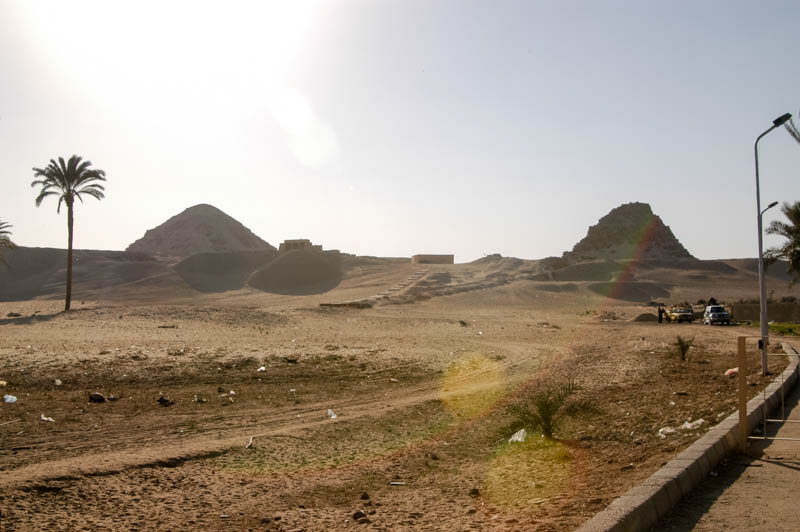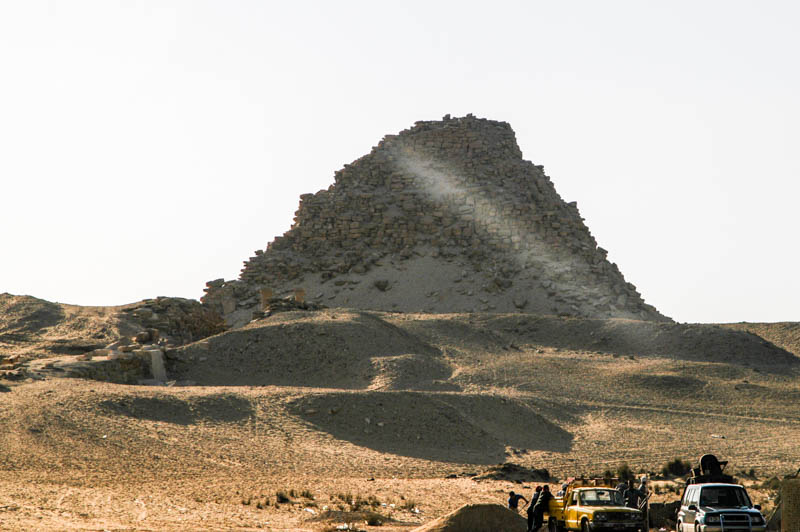The pyramids of Abu Sir are a far cry from the enormous monuments of Giza. The four ruins here date from the 5th Dynasty, and are mostly piles of rubble with excavations of temples and causeways already starting to disappear under the sand. There were originally 14 pyramids here.

The site is currently closed (Feb 2003) as it has been reabsorbed into a military zone, so we were only able to get close enough for a few pictures — unfortunately directly into the late afternoon sun. We pulled up into a vacant lot outside the site and got out to take pictures, and were accosted by locals who argued with our guide and driver that we should have to pay to take pictures from the road.
Only the northern pyramid, of Sahure, is ever open. It has a mortuary temple attached to it that contains scenes of the king hunting and of sea voyages. A 240 meter ramp connected it to a Valley Temple on the bank of the Nile, which can just be made out in the sand. The ceiling of the funerary temple, which is somewhat preserved, is yellow stars on a blue background, a pattern we see in many other tombs and mastabas.

The pyramid of Sahure (named “The Rising of the Ba Spirit”) is built as a core of blocks of limestone , and originally consisted of five or six steps with the blocks held together with a mud mortar. The casing would have been fine white limestone. It was initially excavated by Borchardt in 1902-8, and most of the complex (which includes the pyramid, a retaining wall, a causeway, and temple) was excavated. The mortuary temple, on the southern side of the pyramid, was an elegant mix of black basalt on the floor, red aswan granite for the dado, limestone with painted reliefs above. THis is the first pyramid to show reliefs of the king smiting his enemies, a theme that is repeated in pretty much every temple afterwards.
The valley temple is ruined and overgrown, but originally lay on the shore of Abu sir Lake, a huge canal.